Knowledge
South Australian Green Lip Abalones
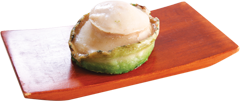 Brief Introduction:
Brief Introduction:
Australia is abundant with wild abalones, and green lip abalone is the most precious species because of its limited production. The water in south of Australia is clear, cold, and rich in nutrients. It is the best growing environment for wild green lip abalones. Green lip abalones are the species of premium abalone which are famous for their tender meat and aromatic flavor.
Place of origin:
Southern waters of Australia
Characteristics:
According to modern medicine, abalones are rich in various nutrients such as protein, fat, iodine, calcium, phosphorus, and vitamin A. Therefore, abalones have tonifying and strengthening effects.
Efficacy:
Abalones have various dietotherapy properties such as being yin-enriching, blood pressure balancing, tonifying, and beautifying. According to TCM (Traditional Chinese Medicine) theories, abalones have yin-enriching, heat-clearing, liver-nourishing, and vision-improvement properties.
Suggested Storage Method:
Store in the freezer compartment of a refrigerator at -18°C.
Suggested Consumption Method:
Frozen green lip abalones are fresh and pleasant. It can be used for making stew or soup, sliced hot pot or fried or boiled in whole piece.
Defrosting method:
Store the frozen abalones at a temperature between 2 °C to 6 °C for about 24 hours to 48 hours. Cook them only after they are completely defrosted. It is not recommended to defrost frozen abalones rapidly. Do not wash them under a water faucet or defrost them at room temperature because that may damage the abalone meat fiber. Cut and remove the tips from the mouths of the defrosted abalones and clean the abalones with a brush. Blanch the abalones with ginger and scallion to remove their oder. When blanching the abalones, remember to put them in the water while it is still cold in order to prevent the abalones from cracking or the lips from falling, which may have an adverse impact on their appearance. The blanched abalones can then be stewed, cooked, or used as an ingredient of soup.
Sea Cucumbers
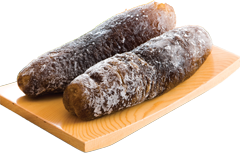 Brief Introduction:
Brief Introduction:
Sea cucumber is one of the four luxury sea products in Chinese cuisine (abalone, sea cucumber, shark's fin, and fish maw). There are more than a thousand species of sea cucumbers around the world, but only 40 of them are edible. In the past, sea cucumbers used to be dried for storage and had to be rehydrated before cooking. Nowadays, it is more convenient to use frozen sea cucumbers for cooking because frozen sea cucumbers are ready for cooking once defrosted.
Place of origin:
Frozen sea cucumbers are mainly from Australia, North America, and South America
- Frozen Australian Sea Cucumbers are easy-to-cook, in dark brown-color and with a slim body.
- Frozen Australian Red Sea Cucumbers are brown colored with a pale red tint. They have a short and plump body, and are easy to cook.
- Frozen Australian White Teat Fish are equivalent to dried white teat fish and have a high gelatin-content meat and a unique taste
Efficacy:
They have kidney-tonifying, essence-replenishing, yin-enriching, aphrodisiac, and dryness-moistening properties. They can help tonifying blood and replenishing strength and are suitable for women to consume after a pregnancy. The gelatin that sea cucumbers contain can help replenish strength and relieve problems like constipation and coarse skin.
Suggested Storage Method:
Store in the freezer compartment of a refrigerator at -18°C.
Suggested Consumption Method:
First, defrost the frozen sea cucumbers, and then wash their entrails clean with water and blanch them before cooking. The frozen sea cucumbers have been cooked in boiling water during their production process, so it is not necessary to cook them for a long time when making a dish. Just cook them for as long as your preference.
Defrosting method:
Store the sea cucumbers at a temperature between 2°C to 6°C for about 8 to 12 hours. Cook them only after they are completely defrosted. It is not suggested to defrost the frozen sea cucumbers rapidly. Do not wash them under running water or defrost them at room temperature because that may damage the sea cucumbers' fibers.
Mussels
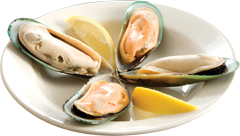 Brief Introduction:
Brief Introduction:
The green-lipped mussels and bottleneck clams are from Golden Bay of South Island, New Zealand. Golden Bay, a place abundant in fruits, wine, and sea products, is located in the northeasternmost part of South Island, New Zealand.
Characteristics:
Both green-lipped mussels and bottleneck clams are rich in proteins, an important category of substances that can protect and repair cells in the body, rebuild the skeleton and muscles, and provide necessary energy to the human body.
Yellow Conches
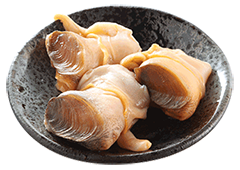 Brief Introduction:
Brief Introduction:
Yellow Conches (are a kind of sea snails) mainly harvest in the Atlantic Ocean of the United States. Conches are rich in seafood taste which is suitable for making soup.
Efficacy:
Yellow Conches are rich in protein and good for kidney-nourishing.
Salmon
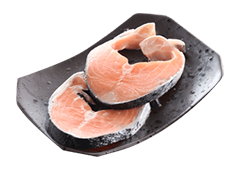 Brief Introduction:
Brief Introduction:
Sustainably farmed Norwegian Salmon is raised in the cold, clear waters of Norway. It has firm texture. It is suitable for pan frying or grilling.
Efficacy:
Salmon contains Omega-3 fatty acids EPA and DHA, which aid to maintaining cardiovascular health.
Frozen Crocodile Meat
 Brief Introduction:
Brief Introduction:
Crocodiles are reptiles and amphibians, which are mainly produced in Thailand, and is processed from Siam Crocodile. It is suitable for making soup.
Efficacy:
Frozen crocodile meat has qi-tonifying, lung-invigorating, cough-relieving and phlegm-resolving properties. It is suitable for symptoms such as asthma, coughing and weak lungs.
Cod
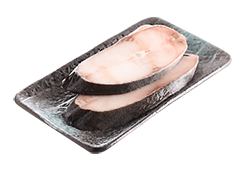 Brief Introduction:
Brief Introduction:
Growing in Norway and the Arctic Ocean, Cod is one of the highest quality wild sea fish.
Efficacy:
Each 100 grams of Cod contains 17.8g of protein, which can support human body's needs.
